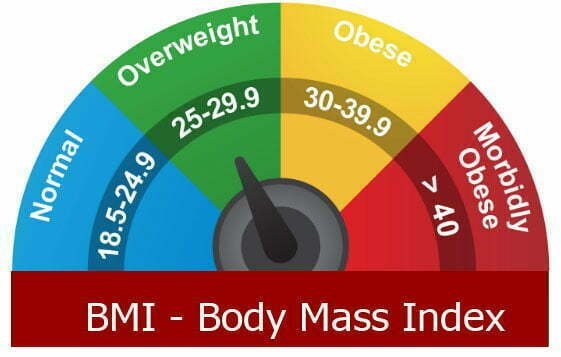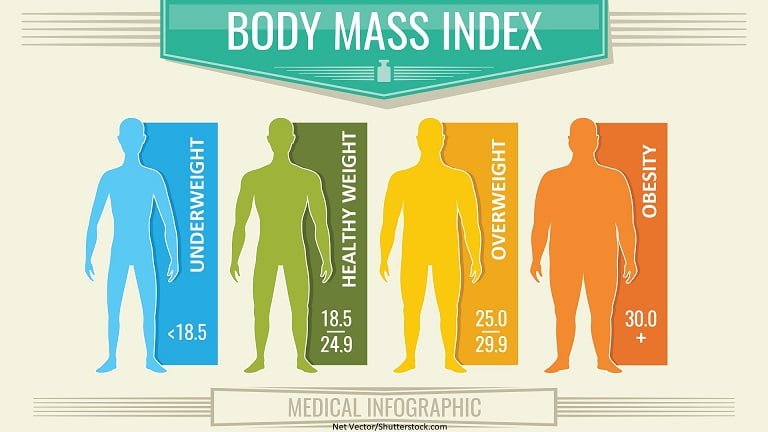How to Calculate BMI: A Comprehensive Guide for Quick Results

Body Mass Index (BMI) is a widely used measure of body composition and a helpful indicator of whether an individual’s weight is within a healthy range. Understanding how to BMI calculation formula allows you to assess your own body weight and make informed decisions about your health. In this comprehensive guide, we will explain the meaning of BMI, provide step-by-step instructions on how to calculate it manually, and demystify the BMI formula for a deeper understanding.

What does BMI mean?
BMI, or Body Mass Index, is a numerical value that is derived from a person’s height and weight. It is a simple yet effective tool used to classify individuals into different weight categories, ranging from underweight to obese. By calculating BMI, you can get a general idea of whether your weight is within a healthy range relative to your height.
How do I calculate my body mass index (BMI)?
Calculating your BMI involves a straightforward process that requires your weight in kilograms (kg) and your height in meters (m). The most commonly used method to calculate BMI is the adult BMI formula, which applies to individuals aged 18 and older. Let’s explore how to calculate your BMI step by step:
Step 1: Convert your weight to kilograms
Start by converting your weight from pounds to kilograms if necessary. To do this, divide your weight in pounds by 2.205. For example, if you weigh 150 pounds, the conversion would be 150 / 2.205 = 68.04 kg (rounded to two decimal places).
Step 2: Convert your height to meters
Next, convert your height from feet and inches to meters. First, convert your height in feet to inches by multiplying it by 12. Then, add any remaining inches to the total. Finally, multiply the total inches by 0.0254 to obtain the height in meters. For example, if you are 5 feet 8 inches tall, the calculation would be (5 12) + 8 = 68 inches. Converting to meters: 68 0.0254 = 1.73 m (rounded to two decimal places).
Step 3: Square your height
To calculate BMI, you need to square your height in meters obtained from the previous step. Simply multiply your height by itself. In our example, 1.73 * 1.73 = 2.9929 (rounded to four decimal places).
Step 4: Calculate your BMI
Finally, divide your weight in kilograms (Step 1) by the square of your height in meters (Step 3). The result will be your BMI. Using our example values: 68.04 kg / 2.9929 = 22.72 (rounded to two decimal places).
Congratulations! You have successfully calculated your BMI using the manual method. Now that we have covered the step-by-step process, let’s delve deeper into the BMI calculation and formula. It’s how to BMI calculation formula.
Calculating BMI: A Comprehensive Guide

The calculation of BMI involves a simple mathematical formula that combines your weight and height. This formula is widely accepted and used by healthcare professionals worldwide. Understanding the BMI formula will provide you with insights into how the index is derived. Let’s break it down:
BMI calculation method – How to BMI calculation formula
The BMI calculation method consists of dividing an individual’s weight in kilograms by the square of their height in meters. It is the method that helps us to know how to BMI calculation formula. Mathematically, it can be expressed as follows:
BMI = weight (kg) / [height (m)]^2
By plugging your weight and height values into this formula, you can obtain your BMI. However, it’s important to note that the resulting number does not take into account factors such as muscle mass, bone density, or overall body composition. Therefore, BMI should be used as a screening tool and not as a definitive diagnostic tool.
BMI formula explained
To gain a deeper understanding of the BMI formula, let’s examine each component individually:
- Weight (kg): This represents your body weight in kilograms. The weight value is divided by the square of your height to account for the relationship between weight and height in determining overall body mass.
- [Height (m)]^2: This term signifies the square of your height in meters. Squaring the height accounts for the fact that weight tends to increase more rapidly with height than with other linear measurements.
Understanding the BMI formula
How to BMI calculation formulas? The BMI formula allows for a standardized calculation that can be universally applied to individuals of different heights and weights. It provides a numerical value that helps categorize individuals into various weight ranges. By determining where you fall on the BMI scale, you can assess your weight status and potentially identify any health risks associated with being underweight, overweight, or obese.
Quick and easy BMI formula
If you prefer a simplified version of the BMI formula, it can be expressed as:
BMI = weight (kg) / [height (m)]^2
This condensed version of the BMI formula retains the essence of the calculation while omitting the explicit mention of weight and height. It serves as a quick and easy way to remember the fundamental concept behind BMI.
Now that you have a comprehensive understanding of how to calculate BMI manually and the underlying formula, let’s explore the interpretation of BMI values and their relevance to health.
Interpreting BMI Results
BMI values are typically grouped into different categories that provide an indication of an individual’s weight status. The World Health Organization (WHO) has established the following classifications:
- Underweight: BMI below 18.5
- Normal weight: BMI between 18.5 and 24.9
- Overweight: BMI between 25 and 29.9
- Obese (Class I): BMI between 30 and 34.9
- Obese (Class II): BMI between 35 and 39.9
- Obese (Class III): BMI 40 or higher
It’s important to note that BMI alone does not provide a complete assessment of an individual’s overall health. Other factors, such as body composition, muscle mass, and distribution of fat, should also be considered. Nevertheless, BMI serves as a useful initial screening tool to identify potential weight-related health risks.

Limitations of BMI
While BMI is a valuable indicator of weight status for most individuals, it does have certain limitations. It is primarily designed for use in adult populations and may not be suitable for children, pregnant women, athletes, or individuals with significant muscle mass. Additionally, BMI does not differentiate between fat mass and lean muscle mass, which can lead to misclassification in certain cases.
It’s essential to interpret BMI values within the context of an individual’s unique characteristics and consult with a healthcare professional for a comprehensive assessment.
Conclusion
In conclusion, calculating your BMI provides valuable insights into your weight status and its potential impact on your health. By following the step-by-step guide provided to know how to BMI calculation formula in this comprehensive article, you can manually calculate your BMI using your weight and height measurements. Understanding how to BMI calculation formula empowers you to assess your weight status and take proactive steps toward maintaining a healthy lifestyle.
Remember, BMI is just one tool among many that contribute to a holistic assessment of your health. Consulting with healthcare professionals and considering additional factors such as body composition and muscle mass will provide a more accurate understanding of your overall well-being.
Regularly monitoring your BMI and making informed choices about nutrition, exercise, and overall wellness can contribute to maintaining a healthier weight and reducing the risk of weight-related health issues.





